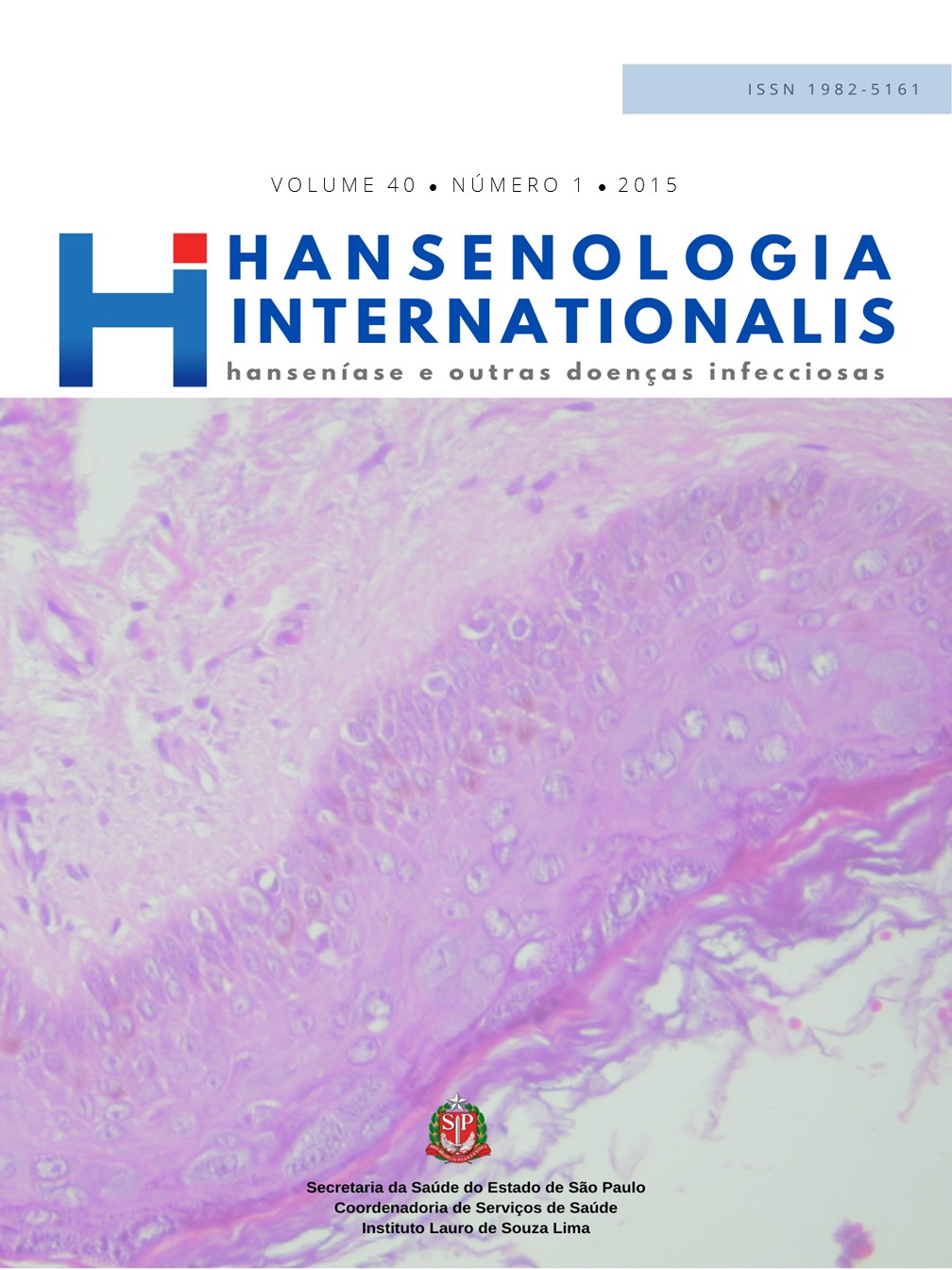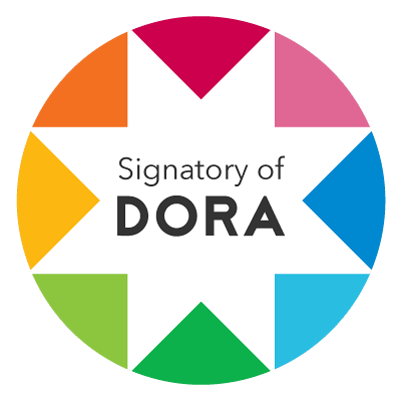CLINICAL, EPIDEMIOLOGICAL AND IMMUNOLOGICAL STUDY TO AMERICAN TEGUMENTARY LEISHMANIASIS IN A DERMATOLOGY REFERENCE CENTER
DOI:
https://doi.org/10.47878/hi.2015.v40.35004Keywords:
Leishmaniasis, Epidemiology, Diagnosis, Fluorescent Antibody Technique, Montenegro skin testAbstract
Introduction: American cutaneous leishmaniasis (ACL) is an infectious disease caused by protozoa of the genus Leishmania. World leishmaniasis is an important endemic disease and public healthproblem in developing countries. Methods: We conducted a retrospective, descriptive and analytical cross-sectional study of 34 patients diagnosed with ACL. Statistical analysis was performed using the nonparametric Spearman’s test. Results: The gender involved was male (68%) and female (32%); the age range of 1 to 92 years old. The most common clinical manifestations were localized cutaneous form (79.5%) and the ulcers (56%).The face was main affected area (44%) and the minor time from onset of symptoms to consultation was 10 months (68%) of patients. Montenegro skin test (MST) was performed in 29 patients, being positive in (89.6%) and the indirect immunofluorescence (IIF) in only 16 patients, being positive in 13. The age and the duration of the disease were significantly associated with MST. Conclusions: It was not observed the IFI association with the patient’s age and disease duration. The treatment was in most cases, meglumine antimoniate (71%), followed Pentamidine (17%). The results demonstrated that the serological tests constitute an auxiliary tool and the correlations with clinical and histopathological
findings are essential.
Downloads
References
2 Goto H, Lindoso JA. Current diagnosis and treatment of cutaneous and mucocutaneous leishmaniasis. Expert Rev Anti Infect Ther. 2010 Apr;8(4):419-33.
3 Costa SM, Cechinel M, Bandeira V, Zannuncio JC, Lainson R, Rangel EF. Lutzomyia (Nyssomyia) whitmanis.l. (Antunes & Coutinho, 1939) (Diptera: Psychodidae: Phlebotominae): geographical distribution and the epidemiology of American cutaneous leishmaniasis in Brazil: mini-review. MemInst Oswaldo Cruz. 2007 May;102(2):149-53.
4 Salomón OD, Acardi SA, Liotta DJ, Fernández MS, Lestani E, López D, et al. Epidemiological aspects of cutaneous leishmaniasis in the Iguazú falls area of Argentina. Acta Trop. 2009 Jan;109(1):5-11.
5 Desjeux P. Leishmaniasis: current situation and new perspectives. Comp Immunol Microbiol Infect Dis. 2004 Sept;27(5):305-18.
6 Murback ND, Hans GFilho, Nascimento RA, Nakazato KR, Dorval ME. American cutaneous leishmaniasis: clinical, epidemiological and laboratory studies conducted at a university teaching hospital in Campo Grande, MatoGrosso do Sul, Brazil. AnBrasDermatol. 2011 Jan-Feb;86(1):55-63.
7 Gontijo B, Carvalho MLR. American cutaneous leishmaniasis. Rev SocBrasMed Trop. 2003 Jan--Feb;36(1):71-80.
8 Lessa MM, Lessa HA, Castro TW, Oliveira A, Scherifer A, Machado P, et al. Mucosal leishmaniasis: epidemiological and clinical aspects. Braz J Otorhinolaryngol. 2007 Nov-Dec;73(6):843-7.
9 Martins ALGP, Barreto JA, Lauris JRP, Martins ACGP.American tegumentary leishmaniasis: correlations among immunological, histopathological and clinical parameters. An Bras Dermatol. 2014;89(1):52-8.
10 Silva LMR, Cunha PR. Urbanization of American Cutaneous Leishmaniasis in Campinas - Sao Paulo (SP) and region: problems and challenges. An Bras Dermatol. 2007 Nov-Dec;82(6):515-9.
11 Castro EA, Soccol VT, Membrive N, Luz E. Epidemiological and clinical study of 332 cases of cutaneous leishmaniasis in the north of Parana State from 1993 to 1998. Rev Soc Bras Med Trop. 2002;35(5):445-52.
12 Holcman MM, Sampaio SMP, Rangel O, Casanova C. Spatial and seasonal distribution of Lutzomyialongipalpisin Dracena, a city in the western region of the State of São Paulo, Brazil, that is endemic with visceral leishmaniasis. Rev Soc Bras Med Trop. 2013;46(6):704-12.
13 Fernandes LC. Leishmaniose cutâneo-mucosa em Nioaque – MS: aspectos clínicos e epidemiológicos. Folha Med. 1990Ago;101(2):93-5.
14 Guerra JAO, Maciel MG, GuerraMVF,Talhari, AC, Prestes SR, Fernandes MA, et al. Tegumentaryleishmaniasis in the State of
mazonas: what have we learned and what do we need? 2015;48(Suppl I):12-9.
15 Reis LC, Brito MEF, Almeida EL, Félix SM, Medeiros ACR, Silva CJ, et al. Clinical, epidemiological and laboratory aspects of patients with American cutaneous leishmaniasis in the State of Pernambuco. Rev Soc Bras Med Trop. 2008;41(5);439-43.
16 Sadeghian G, Momeni A, Siadat AH, Yousefi P. Evaluation of leishmania skin test and its relationship with the clinical form and duration of cutaneous leishmaniasis. Dermatol Online J. 2006 Dec 10;12(7):3.
17 Ministério da Saúde (BR), Secretaria de Vigilância em Saúde, Departamento de Vigilância Epidemiológica. Manual de recomendações para diagnóstico, tratamento e acompanhamento de pacientes com a co-infecçãoLeishmania-HIV. Brasília: Ministério da Saúde; 2011.
18 Labrada M, Weigle K, Valderrama L, Saravia NG. Evaluation of immunoglobinisotype specific to Leishmania in tegumentary American leishmaniasis. MemInst Oswaldo Cruz. 1989 July-Sept; 84(3): 409-16.
19 Ministério da Saúde (BR). Leishmaniose Tegumentar Americana. In: Ministério da Saúde. Guia de Vigilância epidemiológica. 6ª ed. Brasília: Secretaria deVigilância em Saúde; 2005.p. 444-66.
Downloads
Published
How to Cite
Issue
Section
License
This journal is licensed under a Creative Commons Attribution 4.0 International License.


























